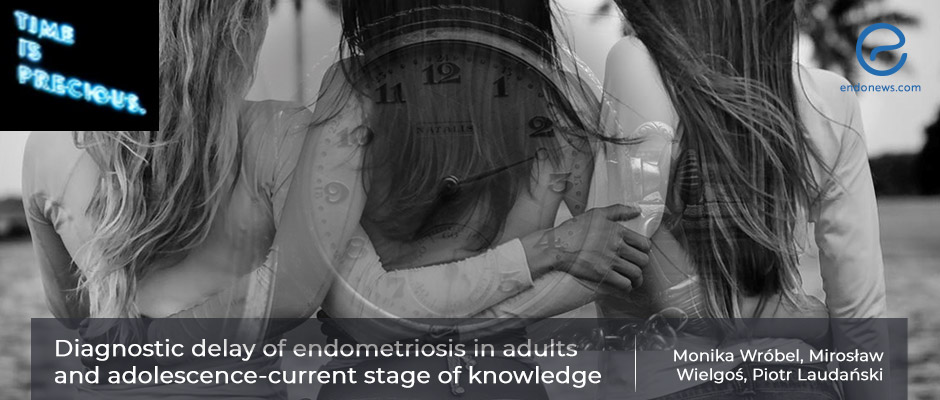Listening to patients’ complaints is the first step on the way to a diagnosis of endometriosis.
May 13, 2022
Women with endometriosis experience a diagnostic delay of approximately 7-10 years due to non-specific symptoms and the absence of a non-invasive diagnostic test.
Key Points
Highlights:
- Adequate knowledge about the disease, awareness among patients, cooperation between the physicians and patients, development of dedicated centers and guidelines for the diagnostic process are all important for early diagnosis and management of endometriosis.
Importance:
- Women with suspicion of endometriosis should be appropriately informed about the diagnostic process including gynecologic examination and ultrasound evaluation to prevent diagnostic delay.
What’s done here?
- This review study was conducted to evaluate the recent condition of diagnostic delay in women with endometriosis.
- Studies published in the PubMed database in the last 3 years were only included in this review.
- The phrases "endometriosis" combined with "ultrasound", "patients’ perspective", or "diagnosis adolescence" were used to screen the literature.
Key results:
- A total of 28 studies were analyzed that met the criteria.
- Early diagnosis and management are only possible with a dedicated approach including 4 steps: assessment of symptoms, patient’s history review, physical examination, and, in the final stage, ultrasound examination.
- Listening to patients’ complaints is the first step on the way to a diagnosis of endometriosis.
- Clinicians should ask open-ended questions about the nature of the pain and use questionnaires if necessary.
- Transvaginal/transabdominal ultrasound is the first-line imaging method to assess gynecologic organs, rectosigmoid region, uterosacral ligaments, and rectovaginal septum.
- Additionally, the efficacy of ultrasound for the diagnosis of endometriosis is comparable to magnetic resonance imaging.
- Endocentres including experienced team and physical equipment should be encouraged as diagnosis of endometriosis requires a multidisciplinary approach.
- The adolescent population is the most likely group for underdiagnosis of endometriosis depending on the high prevalence of pain, particularly dysmenorrhea.
Lay Summary
Early diagnosis and management of endometriosis are not possible due to the wide spectrum of symptoms and absence of non-invasive diagnostic biomarkers. Particularly the adolescent population is at risk for the diagnostic delay because pelvic pain and dysmenorrhea are very common among adolescent girls.
Wrobel et al, from Poland, published a study titled “Diagnostic delay of endometriosis in adults and adolescence-current stage of knowledge” in the journal named Advances in Medical Sciences.
The authors aimed to evaluate the recent status of the diagnostic delay of endometriosis by searching the PubMed database. A total of 28 studies that were published within the last 3 years were reviewed.
Understanding the patients’ complaints and using appropriate questionnaires are the first step to providing early diagnosis and management. Ultrasound evaluation is the primary method to evaluate gynecologic organs and possible endometriosis locations such as the rectosigmoid region, uterosacral ligaments, and rectovaginal septum.
Additional imaging methods regarding magnetic resonance imaging may be used in patients with suspected endometriosis. The establishment of specialized centers for endometriosis, such as Endocentres, and multidisciplinary teams should be supported. Awareness of both patients and clinicians also contributes to the acceleration of the diagnostic process.
“Awareness of the possibility of developing the disease in a particular patient, combined with appropriate use of ultrasound examination, can contribute to the decrease in diagnostic delay,” the authors added.
Research Source: https://pubmed.ncbi.nlm.nih.gov/35247745/
endometriosis diagnosis diagnostic delay ultrasound adolescence

